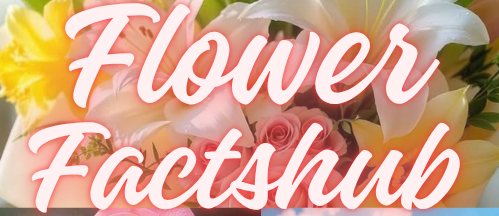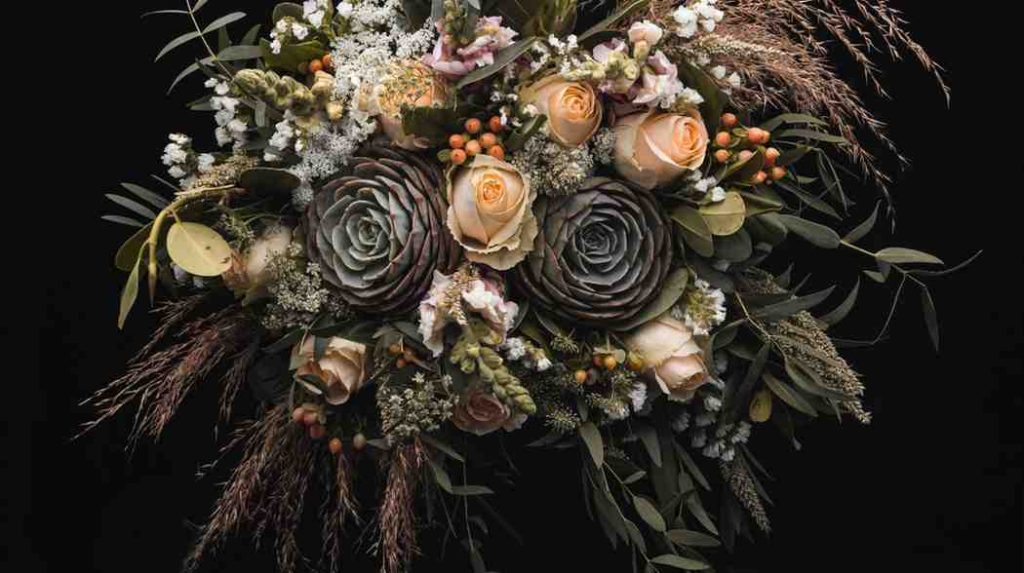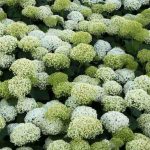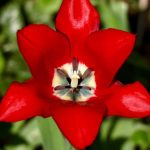Eternal flowers, often known as preserved or forever flowers, offer a beautiful way to enjoy the elegance of real blooms without worrying about them wilting or fading. These flowers go through a special preservation process that keeps their natural beauty intact for months or even years without the need for water or sunlight. As a result, they’ve become a popular choice for home décor, luxury gifts, weddings, and even emotional keepsakes.
More than just a stylish trend, eternal flowers symbolize timeless love, lasting memories, and sustainability. They bring together the charm of fresh flowers and the practicality of long-lasting design, making them a thoughtful and modern alternative to traditional bouquets. Whether you’re decorating your space or gifting something meaningful, eternal flowers beautifully bridge the gap between nature and longevity.
Why choose Eternal Flowers That Capture Love Forever?
Eternal flowers are specially preserved or handcrafted blooms that maintain their beauty for months or even years. Perfect for romantic occasions, they symbolize lasting love and devotion, making them a meaningful gift that captures the essence of your relationship forever, without fading or wilting.
Historical/Cultural Significance
The idea of preserving flowers to retain their beauty and meaning isn’t new it actually dates back centuries and crosses many cultures. In ancient Egypt, for example, flowers were dried and used in tombs and ceremonial offerings as symbols of rebirth and eternal life. Similarly, the Victorians had a deep fascination with the language of flowers, and they often pressed or preserved blooms in books as lasting tokens of love, remembrance, and mourning.
In Eastern cultures, especially in Japan and China, flowers have long carried spiritual and symbolic meanings. Artists and writers traditionally used techniques like flower drying and pressing in arts such as ikebana (the art of flower arrangement) and in literature to express emotions without words. Even in medieval Europe, people would preserve herbs and blossoms to protect against evil or to keep the memory of loved ones alive.
Over time, the cultural desire to hold onto the emotional power of flowers inspired more advanced preservation methods. This evolution eventually gave birth to what we now call “eternal flowers” a modern yet deeply rooted continuation of the human connection to nature, memory, and beauty. In every culture, flowers have been more than decorations they’ve been messengers of love, symbols of status, and emblems of timelessness. Eternal flowers simply extend that message into the future.
Purpose of the Discussion
In today’s world, where sustainability meets style and emotional value matters more than ever, eternal flowers have taken on new meaning. This discussion explores how these long-lasting blooms are more than just preserved plants they represent a shift in how we think about beauty, environment, and expression. As fresh flowers continue to be used for temporary moments, eternal flowers offer a thoughtful, lasting alternative that fits our changing lifestyles.
From a practical point of view, eternal flowers are now widely used in home décor, event design, and luxury gifting. Their ability to stay fresh-looking for years means they bring consistent beauty without ongoing cost or maintenance. They’ve also become a favorite in wedding arrangements and memorial displays where emotions run deep and preservation adds emotional weight.
Beyond their aesthetic appeal, eternal flowers also carry environmental advantages. They reduce waste, lower the carbon footprint of frequent flower shipments, and support more conscious consumer habits. On the artistic side, designers and florists are using eternal flowers to create stunning, long-term installations and custom arrangements that blur the line between nature and art. In this article, we’ll explore all these aspects in detail showing how eternal flowers are reshaping our relationship with beauty and meaning.
Types of Eternal Flowers
Eternal flowers come in several beautiful forms, each offering its own charm, durability, and purpose. While all of them are designed to last far longer than fresh-cut flowers, they differ based on the preservation technique and the kind of bloom used. Understanding these types helps in choosing the right one for personal use, décor, or gifting.
One of the most popular types is the preserved rose. Florists treat these real roses with a special solution usually a mix of glycerin and plant-based substances that replaces their natural sap. The result is a soft, natural looking rose that can last for one to three years with proper care.
Dried flowers include a variety of blooms like lavender, baby’s breath, hydrangeas, and statice. Though they often have a more rustic look compared to preserved flowers, dried flowers are just as meaningful and versatile especially in boho-style or vintage-themed settings.
Another fascinating type includes freeze-dried flowers, where blooms are frozen and then dried under vacuum pressure. This technique retains more vibrant color and detail, making them perfect for wedding bouquets or floral keepsakes. Some creators also craft handmade or wood-based eternal flowers, often from materials like sola wood, which mimic real petals and offer a fully eco-friendly option.
Each type has its unique strengths, but all eternal flowers share one purpose: to bring enduring beauty with little to no maintenance.
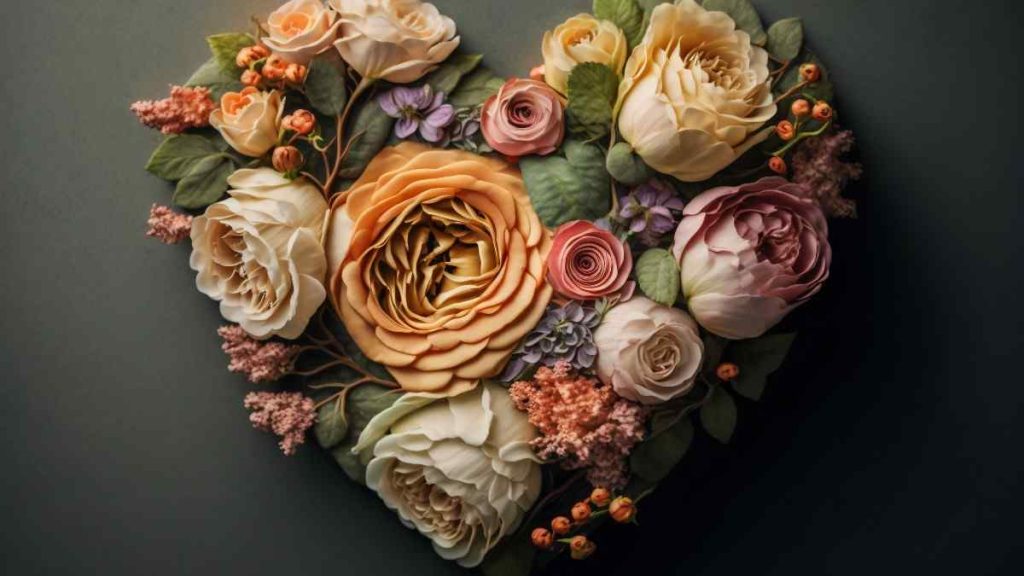
The Process of Creating Eternal Flowers
The magic of eternal flowers lies in the way they’re preserved. While the final result looks effortless and elegant, the process behind it is both scientific and delicate. Different methods are used depending on the flower type and the intended finish, but all aim to maintain the bloom’s original color, texture, and form for as long as possible.
The most common technique is glycerin preservation. This begins with freshly cut flowers at their peak. These blooms are placed in a solution made of glycerin and water, which is gradually absorbed through the stem. As the flower drinks in the mixture, the glycerin replaces the natural moisture within the petals and leaves, keeping them soft and flexible.
For freeze-dried flowers, the process is more technical. Fresh flowers are flash-frozen at ultra-low temperatures, then placed in a vacuum chamber where the ice inside the flowers turns into vapor without becoming liquid again. This method preserves the flower’s original shape and color with amazing precision, making it ideal for delicate blooms like orchids and lilies.
In the case of dried flowers, the process can be as simple as hanging them upside down in a dry, dark space. Some are dried using silica gel, which pulls moisture from the flower more gently, helping retain their color. Meanwhile, wooden eternal flowers, such as those made from sola wood, are hand-cut and shaped to resemble real petals. Artists often dye and scent them to mimic the experience of fresh blooms.
No matter the method, the goal is always the same to capture the flower at its most beautiful moment and preserve it for months or even years to come. This careful attention to detail is what gives eternal flowers their lasting appeal and growing popularity.
Uses and Applications
Eternal flowers aren’t just beautiful to look at they’re incredibly versatile, which makes them ideal for a wide range of personal, commercial, and creative uses. Thanks to their durability and natural appearance, people now turn to these long-lasting blooms for moments that matter, both big and small.
One of the most common uses is in home décor. Eternal flower arrangements add a touch of nature and elegance to living rooms, bedrooms, and even office spaces without needing regular upkeep. Whether styled in modern glass domes or rustic vases, they act as low-maintenance centerpieces that stay fresh-looking for months or even years.
They’re also incredibly popular in gifting. From romantic occasions like anniversaries and Valentine’s Day to heartfelt gestures for birthdays or sympathy, eternal flowers allow people to express emotions with a lasting impression. Many high-end florists even offer personalized boxes, initials, or luxury packaging to make the gift even more memorable.
In the world of weddings and events, eternal flowers offer a stress-free alternative to fresh blooms. Brides use them in bouquets, boutonnieres, and table settings to ensure everything looks perfect throughout the day and can be kept as keepsakes afterward. Event planners also use them for reusable installations, saving costs on future decor setups.
Beyond aesthetics, eternal flowers play a role in wellness and memorial practices. Some people place them in sacred spaces, memory boxes, or gravesites, finding comfort in their longevity. Others use them in art projects, resin crafts, photography, and fashion accessories, where the preserved look fits well with long-term design needs.
Overall, eternal flowers have moved beyond being a novelty they now serve as practical, emotional, and artistic tools in everyday life. Their adaptability is one of the main reasons they’ve grown from a trend into a lifestyle choice.
Benefits of Eternal Flowers
Eternal flowers offer far more than just visual appeal they bring a unique combination of emotional, practical, and environmental benefits that make them a smart and meaningful choice for many people. Whether you’re looking to decorate, gift, or preserve memories, these flowers provide long-lasting value that fresh flowers simply can’t match.
First and foremost, their longevity is a major advantage. Unlike fresh flowers that fade within days, eternal flowers can maintain their beauty for months or even years with minimal care. This makes them a cost-effective option in the long run, especially for those who enjoy having flowers around regularly without the constant need to replace them.
In addition, they’re low maintenance. There’s no need for water, sunlight, or trimming. This makes them perfect for busy individuals, frequent travelers, or anyone who struggles with plant care.
From an emotional perspective, eternal flowers make memories last. People preserve wedding bouquets, gift forever roses on anniversaries, and offer sympathy arrangements that time doesn’t touch all creating powerful keepsakes that continue to hold meaning long after the moment passes.
On a broader level, eternal flowers also support eco-conscious living. By reducing the demand for frequently shipped fresh flowers, they help lower carbon emissions and packaging waste. Additionally, they contribute to more sustainable consumer habits by encouraging longer product lifespans and mindful gifting.
With all these advantages, it’s clear that eternal flowers are more than just a trend they’re a thoughtful solution for anyone who values lasting beauty, sustainability, and meaningful connections.
Challenges and Criticisms
While eternal flowers have gained popularity for their elegance and longevity, they’re not without their challenges and criticisms. Like any product, they come with trade-offs that are important to consider especially for those who value transparency, sustainability, and authenticity.
One common concern is their cost. Eternal flowers often carry a higher price tag compared to fresh flowers, especially when crafted into premium arrangements. This upfront investment can feel steep to buyers who aren’t familiar with the long-term benefits. Although they last longer, the initial cost may discourage some from choosing them for everyday use.
Another criticism revolves around their environmental claims. While many see eternal flowers as a sustainable alternative, not all preservation processes are fully eco-friendly. Some methods use chemical solutions, synthetic dyes, or energy-intensive equipment. Improper handling of these elements reduces the overall environmental value, especially when producers import or mass produce the flowers with little regulation
Aesthetic preferences also play a role. Some people feel that eternal flowers, especially the heavily preserved or artificial-looking varieties, lack the freshness or fragrance that makes real flowers so emotionally powerful. For others, the idea of a flower that doesn’t age or change can feel unnatural or too polished.
Finally, in creative and cultural settings, authenticity matters. Certain events like traditional ceremonies or spiritual rituals may still call for freshly cut, naturally scented flowers to uphold customs and emotional depth. Eternalflowers while beautiful, might not always carry the same symbolic weight in every context.
Eternal Flowers in Art and Culture
Eternal flowers have not only found their place in homes and events but have also made a strong mark in the worlds of art and culture. As symbols of timeless beauty and preserved emotion, they’ve inspired creators across disciplines from visual arts to fashion, and even interior design.
In the art world, eternal flowers are used in sculptures, resin crafts, and mixed media installations to represent ideas like memory, preservation, and the passage of time. Artists often choose these blooms to highlight the contrast between nature and permanence, or to challenge the fleeting nature of beauty. Because these flowers retain their shape and color, they allow for complex compositions that would be impossible with fresh blooms.
In fashion and accessory design, preserved flowers are used to create floral jewelry, hairpieces, and even clothing embellishments. Their lightweight and long-lasting qualities make them ideal for wearable art, especially for brides or in couture fashion where elegance and uniqueness matter. Eternal flowers also appear in editorial shoots, offering photographers and stylists a durable prop that doesn’t fade under studio lights.
Culturally, eternal flowers are beginning to replace fresh flowers in rituals, memorials, and religious ceremonies, particularly when longevity and symbolism are essential. In modern adaptations of cultural events, they serve as respectful alternatives that still honor tradition but embrace practical needs especially in destination weddings or international ceremonies where transporting fresh flowers isn’t feasible.
Future Trends and Innovations
As the popularity of eternal flowers continues to grow, they are not only solidifying their place in contemporary life but also paving the way for future innovations. With increasing demand for sustainable, lasting beauty, the floral industry is adapting, and we can expect exciting advancements in both preservation techniques and design concepts.
One of the most promising trends is the integration of technology in the preservation process. In the near future, we may see even more efficient methods of preservation, like bio-based solutions that are both sustainable and non-toxic. Researchers are also exploring new ways to preserve flowers that don’t require the use of chemical dyes or glycerin, making the process even more environmentally friendly.
On the design side, we’re likely to witness more customization options for eternal flowers. As 3D printing and digital technology advance, designers are creating entirely new types of arrangements that mix real and synthetic elements, and they’re developing personalized flowers tailored in size, color, and even texture. Customization, especially in luxury gifts and memorial pieces, will likely become a major selling point in the market.
Final Thoughts
Eternal flowers represent more than just a passing trend they encapsulate the intersection of nature, art, sustainability, and sentiment. From their ancient cultural roots to their modern-day applications in décor, gifting, and memorialization, these flowers continue to captivate us with their enduring beauty. Their ability to stay vibrant for months or even years without maintenance offers a unique solution for those seeking lasting elegance in their homes or special events.
As we’ve explored, eternal flowers are more than just aesthetically pleasing. They carry profound emotional value, acting as symbols of love, memory, and timelessness. The preservation process, whether through glycerin, freeze-drying, or other innovative methods, ensures that these blooms retain their beauty without the environmental costs associated with fresh-cut flowers.
Looking forward, we can expect eternal flowers to evolve even further, offering new possibilities for customization, sustainability, and integration with cutting-edge technologies. Whether you’re using them for home décor, gifts, or ceremonial purposes, eternal flowers are shaping the future of floral artistry while staying true to their timeless role in human culture.
In the end, eternal flowers are not just about holding on to a moment they’re about cherishing what lasts. Their beauty, versatility, and lasting appeal make them a unique choice for anyone who seeks to celebrate nature, love, and memory in a way that transcends time.
Frequently Asked Questions (FAQs)
Q1: What are eternal flowers made of?
Eternal flowers can be real flowers preserved through special techniques or high-quality artificial flowers made from silk, wood, or other materials designed to last for years.
Q2: How long do eternal flowers really last?
Depending on the type, eternal flowers can last from 1 to 5 years or more with proper care, especially preserved roses and wood flowers.
Q3: Do eternal flowers need any maintenance?
Very little! Just keep them away from direct sunlight, moisture, and dust to maintain their beauty over time.
Q4: What occasions are best for giving eternal flowers?
Eternal flowers are ideal for Valentine’s Day, anniversaries, weddings, proposals, or as a lasting gesture of remembrance and love.
Q5: Are eternal flowers eco-friendly?
Yes, many are! Preserved flowers reduce waste by lasting longer than fresh blooms, and some are made from sustainable materials like sola wood or recycled silk.
Q6: Can I personalize eternal flower arrangements?
Absolutely. Many florists and online stores offer custom designs, colors, and packaging to match your special occasion or personal message.
